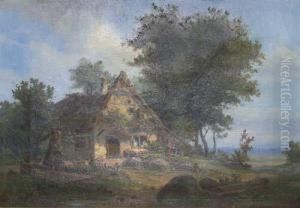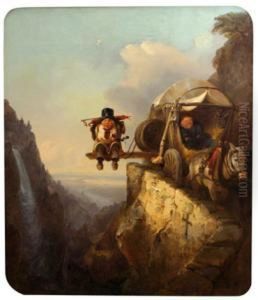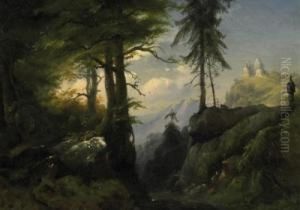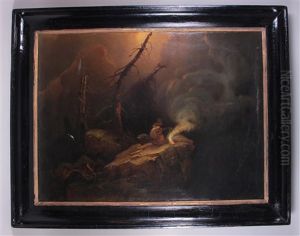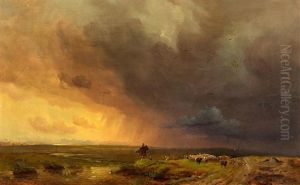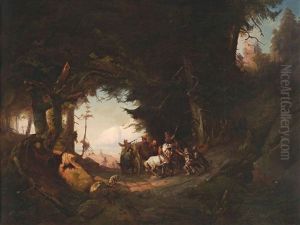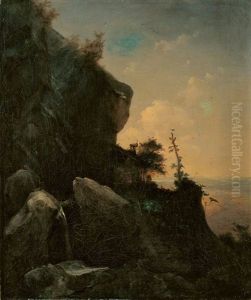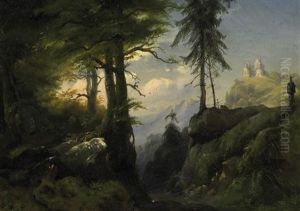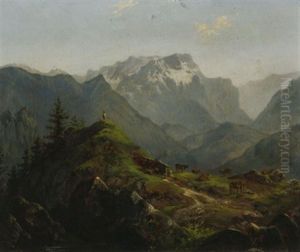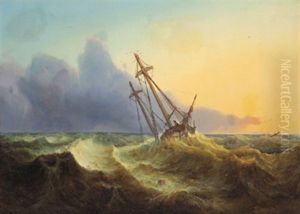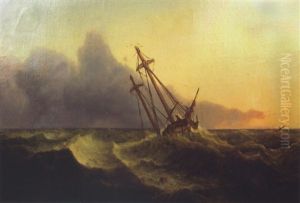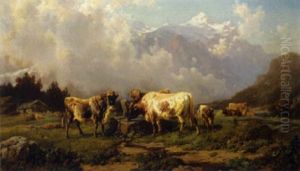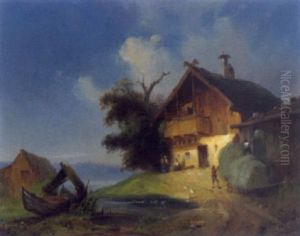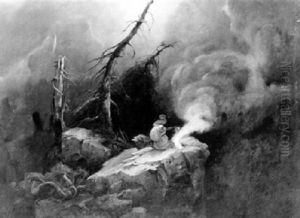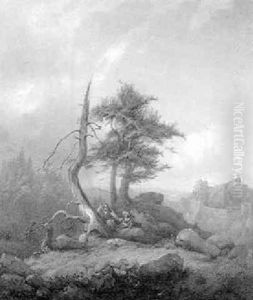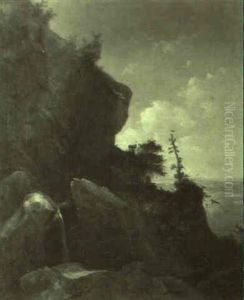Carl August Reinhardt Paintings
Carl August Reinhardt was a German painter and illustrator, born in 1818 in Dresden, Germany, and passed away in 1877. His body of work is mainly recognized for its contributions to the Romantic movement, a period that prized emotion, individualism, and nature, which greatly influenced European art and literature in the late 18th and early 19th centuries. Reinhardt's upbringing in Dresden, a city with rich cultural heritage and an important art scene, notably influenced his artistic development and inclination towards the arts from a young age.
Reinhardt's education in art began at the Dresden Academy of Fine Arts, where he was exposed to the teachings of Caspar David Friedrich, a leading figure in German Romanticism. Although not directly taught by Friedrich, the influence of Friedrich's mystical landscapes and emphasis on the sublime in nature is evident in Reinhardt's works. After completing his studies, Reinhardt spent significant time traveling throughout Europe, including Italy and France, where he absorbed various artistic influences and honed his skills, particularly in landscape and architectural painting.
Throughout his career, Reinhardt developed a distinctive style characterized by meticulous attention to detail, vibrant color palettes, and the integration of light and shadow, which brought his landscapes and architectural scenes to life. He was particularly adept at capturing the atmospheric conditions of different environments, a skill that made his paintings evoke a strong sense of place and mood. His illustrations, often for books and magazines, displayed his versatility and keen eye for narrative detail, contributing significantly to the visual culture of his time.
Despite his contribution to the arts, Carl August Reinhardt has not achieved the same level of recognition as some of his contemporaries. His works, however, continue to be appreciated by art historians and collectors for their beauty and technical skill. Reinhardt's legacy is that of a skilled painter and illustrator who captured the spirit of the Romantic era through his detailed and evocative representations of the natural and built environment. His art remains a testament to the Romantic ideals of beauty, emotion, and the sublime in nature, reflecting the broader cultural movements of his time.
